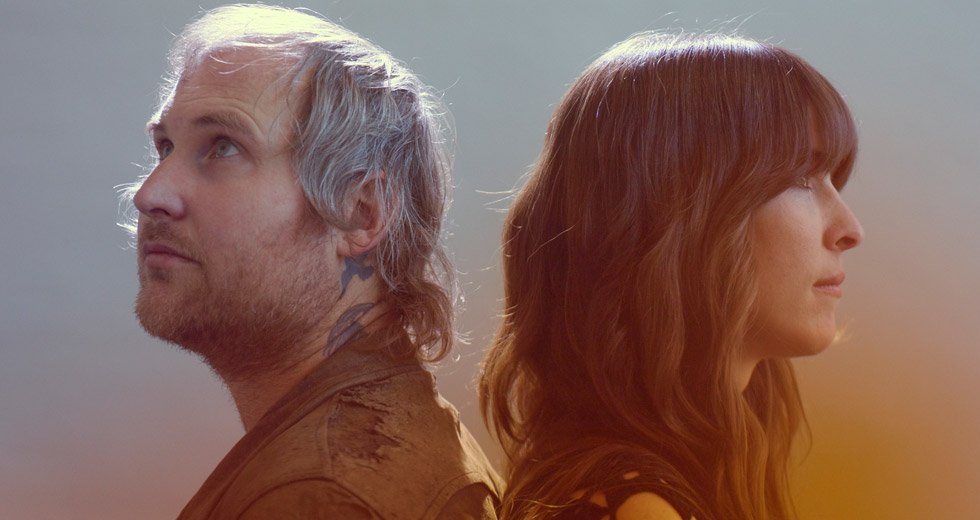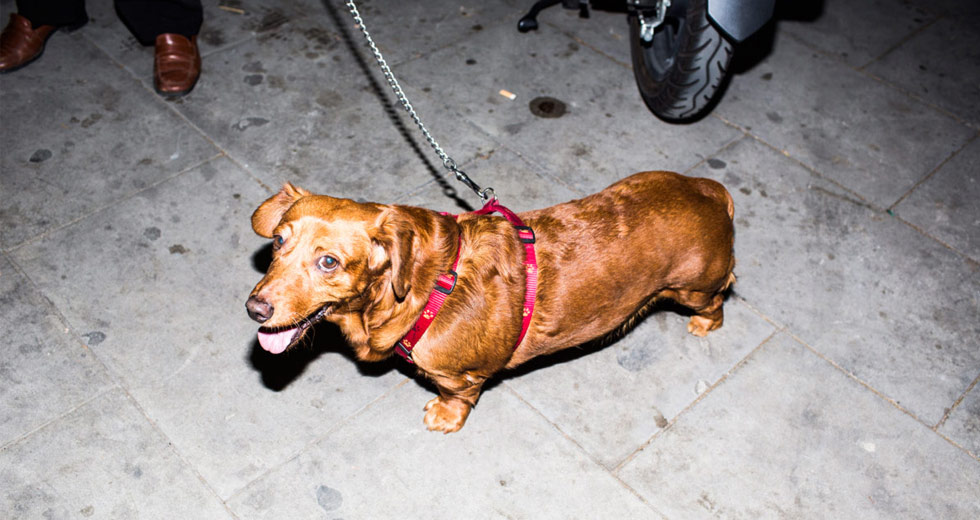Interview: TV Party Drummer Lenny Ferraro
The NYC scenester talks about the early days of punk and hip hop.
Lenny Ferraro, a 65 year-old drummer who grew up in Pittsburgh, is recalling the time he kissed Debbie Harry as part of a skit on the cult ’80s downtown New York City public access show TV Party. “Sometimes you have to boldly take that step and surrender to the moment,” he says with a laugh. It’s a mantra that could apply throughout Ferraro’s career.
Self-taught with the sticks, Ferraro’s name might be buried in the dusty liner notes of musical history, but his rhythmic contributions run like a syncopated heartbeat throughout a swathe of scenes. He caught his first break on the ’60s R&B tour circuit, backing up luminaries like Jerry Butler, The Dells and Aretha Franklin. Then after a stint in the Vietnam War – where he fashioned an impromptu kit out of wooden drums to keep his chops up – he became part of NYC’s punk and hip hop scenes as the late ’70s spilled over into the early ’80s. During that period he also laid down the grooves for the legendary breakbeats that would score the iconic movie Wild Style.
When did you catch your first big break?
It was in the ’60s when I was 15 years-old. I was in Pittsburgh and they had these four big dance clubs around town and Billy Preston was playing one of them. He stops the song, which was an instrumental, and throws the mic stand at the drummer and walks off the stage. I’m maybe 15 years old and the promoter comes out and asks if there’s a drummer in the house. So I step up and tell Billy that if he counts it off, then I can play it. I did. Then the promoter who handled the clubs, which were in different corners of the city, told me, “Aretha Franklin is coming next week and I want you to back her up.” That was it. Still to this day a friend will call me up and say, “I still can’t believe you went up on stage and did that!” But I trust in the universe – I’m self-taught and my mind works so fast with music – if I hear it, I can play it. I just know what it’s supposed to be.
How did working on the R&B tour circuit lead to you becoming part of the downtown New York City scene?
Well after Vietnam I was working with bands and there was a big oil crisis going on, so rather than do one-nighters we started playing in Holiday Inns where they’d book us for a month. That was so we’d only need to go get gas to move once a month which was easier than trying to get gas every night, ‘cause there was these long gasoline lines and it was brutal. I looked at it as a way to learn to write and play hit songs. When you’re doing those sort of gigs, you’re playing all the number ones and top ten hits so it really improved my songwriting.
So, off the back of that, I decided to move to New York City where I knew a couple of people and went to a couple of auditions. It was 1978 and the punk era, which wasn’t my forte but I could play it. In order to survive in New York I was working at one point in 15 different bands, just keeping my chops up. It was the punk scene, which was a simple format to remember. I was playing there and then I got involved in a show called TV Party.
How did the gig on Glenn O’Brien’s TV Party come about?
I was invited there by a friend from Pittsburgh, Walter Steding, a violinist. He said they could use a drummer. I decided I couldn’t take a drum kit into a small studio audience setting ‘cause it would be too overbearing, so I invented what would be later known as the TV Party drum kit. My father was a jazz drummer so I had skills with brushes, so we’d put a microphone on it and I’d play on a magazine, a piece of cardboard and two little cymbals. I’m remember thinking that I wasn’t into the punk thing at all – I came from an R&B background – but if this is what I had to do to survive then let me do it.
What do you remember about the set of TV Party?
I really liked it because it was absurd. Glenn O’Brien called the show “a lesson in sub-realism” and it really was because it was so ridiculous. It was enjoyable and I started looking forward to it. I was still playing all these nights, but on Monday nights I’d leave it open for TV Party.
Were you paid to play on TV Party?
No, I wasn’t paid. In fact, everybody was poor at the time and they’d pass a hat around to pay for the studio – and it wasn’t even a good studio! It was more like a club house and we all became really close friends. We’d do absolutely ridiculous things: I’d do a magic show and I’d use the name The Great Luigi Ciccolini and my assistant was Debbie Harry, The Biggest Star In The World At The Time. I’d tie her hands behind her back but make sure the camera saw that it was never actually tied, like I just looped a silk scarf over her hands. I’d tell the cameraman to make sure they got the fact her hands weren’t tied. Then I’d ask her, “Are you sure you can’t get out?” She’d go, “Yes!” I’d ask her again and she’d say the same thing. Then I’d look at the camera and pull my bow-tie and grab her and kiss her for five minutes. The audience went insane! It was my opportunity to kiss the biggest pop star at the time. And she played into it and said, “Gee, thanks Luigi.”
What was your relationship with Fab Five Freddy like?
Well, to this day he’s told me that I was the only white guy who when I said the word “bad,” he knew what I was talking about. I came from working with the black R&B artists and I knew how to emphasis the word “bad” and Freddy knew what I was talking about. Everyone else [on the scene] was trying to be intellectuals. We’d go to nightclubs, hang out, then do another TV Party show.
It was during all that Freddy told me, “Lenny, there’s this thing going on in the Bronx and Brooklyn called hip hop.” He played me some of the music and told me about the plan to make the breakbeats [for the movie Wild Style]. I was like, “Get me eight bars of each of the different breakbeats that are popular with the DJs and we can go in and record this in record time.” Freddy wasn’t a drummer, but I knew exactly what to do. We had Chris Stein playing guitar and a good funky bass player, David Harper, and we could create original music instead of taking off a good R&B record and scratching off a couple of phrases. In the studio, we did the drums first and then used that as the click track.
With your roots in the R&B world, how did you feel about hip hop music at the time?
I had no idea that it was going to take off like it did. I was interviewed and I said, “I’ll give it about six months.” But Freddy spied it in his neighborhood and then he brought it to me and then Chris Stein and Debbie Harry got involved in it and it just kept growing. We were becoming popular because of it.
Did you experience much of the hip hop club scene in New York City during that time?
Yeah, it was a fun experience, especially for the audience. We’d go to the Mudd Club or Danceteria and just start doing it and play for four hours, but it felt like 30 minutes for us. It was once we’d done a couple of nightclub gigs with [the Wild Style breaks] that I saw the power of hip hop. When I put that big beat on people, it was live! I was blessed to be in the right place at the right time.
What do you remember about the Mudd Club?
I remember when I first did a gig at the Mudd Club, there was some animosity because I was white. I could sense it because [the crowd] were staring at me and then they’d look at Freddy like, “Come on, what’s he doing here?” Freddy would say, “Don’t worry about it, he’s the man.” Then as soon as the DJ went into a breakbeat, I’d answer it on the drums. It was sort of like it was a test to see if I really understood it; there was a tension and then once I answered that breakbeat they gave me, I was in the club. They knew my name was Ferraro but then they’d call me “the Maserati of the drums.” It was sort of intimidating in a way, but Freddy knew that I had the skills.
How do you look back on those days now?
It was the greatest club scene in New York City’s history for me. I played for fun, but I also used to be very respected with what I’d do with the drums. I’ve worked with a lot of major stars. When I was in Pittsburgh, I was working with the R&B artists and that’s where my skills came from, but from being in New York City I also went on to tour the world with Lou Reed.
How did touring with Lou Reed come about?
Oh, you’ll love this story. So he calls me up and says, “I got your name from somebody and I’m looking for a drummer and I’m going on tour.” I said, “Okay, I’ll come along and sit and play with the band.” When I get there though, he goes, “Well, the last thing I want to do is audition a drummer.” I looked over at him and was like, “Hey, didn’t you call me? I didn’t call you!” So he goes, “Well I always start off with ‘Sweet Jane.’” I didn’t know any of his music though – I’m an R&B drummer. I ask him, “How does it go? Can you hum a few bars and maybe I can fake it?” That made him start laughing.
So Lou Reed said he’ll count it off and I did that one song and he liked it and said, “I’m going on the biggest tour of my life and I want you to become my drummer. Do you know “I’m Waiting for the Man?”“ I was like, “Can you hum that one too?” [pauses] All I knew of his music was “Walk on the Wild Side.”

